How To Make Blog Coments Login Redirect To Another Page
Whether you're trying to redirect a page in WordPress or just want to discover and understand why it's important, use this guide to help you get ahead of it and learn all there is to it.
Sooner or later, all of us come in a situation where we need to redirect y post or a page on our WordPress blog or site. And to keep you prepared for when that time comes here's all you need to learn about it and perform it by yourselves. Knowing things like these helps you understand how things around your site work, but also help you in knowing more about how to be more visible online and do better, SEO wised.
What is a WordPress redirect, and why do we need it?
You know when you search for something and, instead of the result, you get a 404 error page or something similar? Broken links like that ones are, for one, bad for SEO since they state to Google that something's wrong with the site, especially if there are more than one of broken ones. Secondly, it's a bad UX practice, not to mention people will leave more from the site with broken links; hence, a higher bounce rate. So, in these and similar cases, it's advisable to fix broken links, and you do that with WordPress redirects.
Top Hosting recommended by Meks
How to look for broken links?
If you're just now experiencing this type of situation and don't know where to look, here's the thing. Head over to Google Search Console and look upon the Coverage. It's where you'll see any technical issues your site has, and if there are any of the broken links on it. If so, you'll need to do a redirect, so you don't lose traffic or positions.
What are some other reasons to redirect a page in WordPress?
Apart from broken links, there are a few more situations that need this particular action. To name the most common ones:
- Changing your permalinks
- Deleting/replacing old content with a new one
- Moving a page/post to another link
- Merging two websites
- Moving to another domain
Five types of redirects
No matter if you use WordPress or any other CMS, there are several types of redirects to consider and choose from, based on your end actions. You should know about them, so you know which one to use and why.
301 Moved Permanently
The one you use when you're deleting a page or a post entirely and want to forward people to some other, relevant location
302 Found
Previously known as Temporary Redirect, it signals to the search engines that your post or a page is temporarily moved without telling us why. But, since there's hardly any particular reasons to use this type of redirection, it isn't something you should think about at all. Good to know, though.
303 See Other
The status code you mostly see when you're ordering or paying something online. It signals that the server is redirecting the user agent to a different resource. What it does is tells us we don't need to refresh a page or hit those back buttons, that there's a process in motion and we should hold on for a second or two 😊
307 Temporary Redirect
Similarly to the 302 redirects, with the slight difference that it actually sends you to that other temporary place. And, since it's a bit confusing to understand which one to use precisely, here's a good explanation found at Stack Overflow that can help:
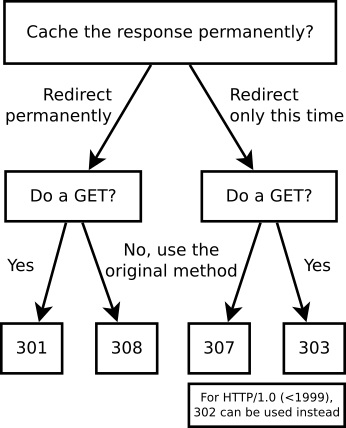
308 Permanent Redirect
Similar to code 301, this redirect indicates that the page or post has moved to another location. The difference between these two is:
- 301 status code means that all future requests should be directed to the given URL, while
- 308 status code means all future requests should be repeated using another URL.
Two ways to redirect a page in WordPress
Now, if all this hasn't intimidated you 😊 (as it shouldn't, it's not complicated at all), here's how you perform redirects on your site. There are two ways to do it – manually, and with a Plugin. Read about it and choose what's best for you. But know this: always back up your site before performing either way of redirecting. Better safe than sorry, right?
How to redirect a page in WordPress manually
If you know your way around codes, redirecting a page manually will be a breeze. To create a redirect through a server, you'll need to log in via FTP, access your .htaccess file and edit by adding this piece of code:
| RewriteEngine On Redirect 301 / an - old - post / / a - new - post / |
And that's it. Note that this way works only if you're on an Apache server.
How to redirect a page in WordPress with a plugin
Fixing redirects in WordPress with a plugin might be a quicker and easier way for some, which is why we recommend these plugins to do it.
301 Redirects

A free WordPress redirects plugin that takes care of 301 and 302 redirects. Whether you're a new site or not, it's a simple plugin that's easy to install and use. Upon installation, click on the Configure Redirects link or find the dashboard within the Settings to configure your redirects:
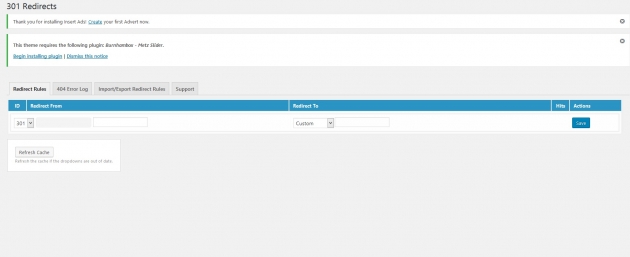
click for bigger image
Simply choose the status code, enter the old URL and where you want to redirect it to, click Save and that's it. You can choose to redirect that link to another post, page, media, term archive, or any custom place you make.
All In One Redirection

Another useful and free plugin that lets you manage and create redirections in WordPress. Whether you need to set a post, a page, or a complete website to another location, this is the plugin to use. Even for the HTTP to HTTPS redirection. Just install it and head over to Settings to add and configure new redirecting:

click for bigger image
Apart from that, All In One Redirection has more cool features like:
- Full logs of all redirected URLs
- Auto 404-page tracking
- Custom redirection
- Hide the URL redirection option
and more.
Redirection

Redirection is a free WordPress plugin that allows you to manage 301 redirections and keep track of 404 errors at the same time. How to use it? After you finish setting up:
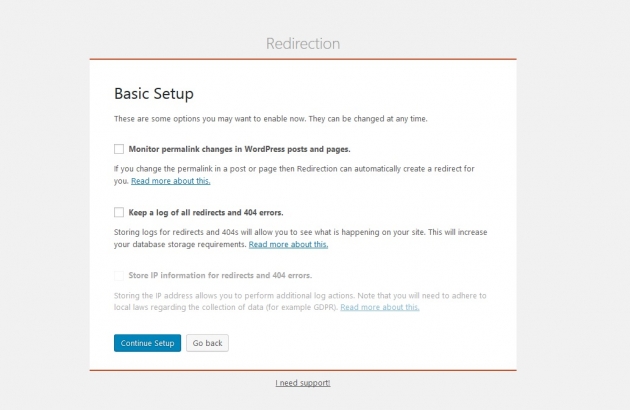
click for bigger image
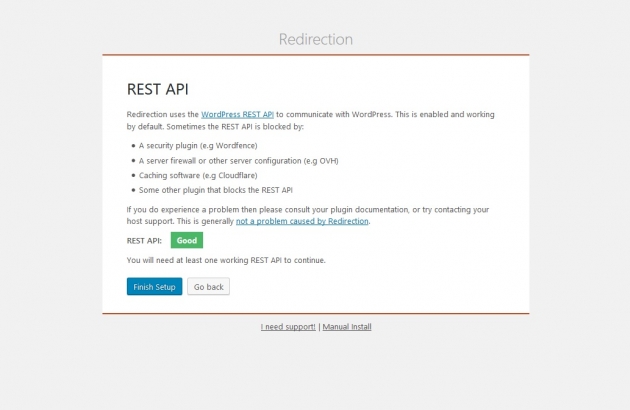
click for bigger image
simply determine a source /the old/ URL and a target /the new/ URL and let the redirection begin! As simple as that!

click for bigger image
A few other useful features include:
- Monitor 404 errors, get detailed information about the visitor and fix any problems
- Import from .htaccess, CSV, and a variety of other plugins
- More powerful URL matching, including regular expressions, and other conditions
- Check a URL is being redirected
SEO Redirection

SEO Redirection is a freemium plugin that takes care of 301, 301, and 307 status code redirections, but also:
- Full logs for all redirected URLs
- Supports wild card redirection
- Redirect index.php, index.html, and index.htm access
- Is GDPR compliant and more.
With it, you can set up Post or Custom redirect and keep track your redirects history:

click for bigger image
Premium version includes features like:
- Manage 404 errors
- Redirect Cache
- Adds in auto redirect when detecting a change in any post permalink
- Import and Export redirects
- Supports all post types and more
The price for premium SEO Redirection is $29.
Yoast SEO

As you know, Yoast SEO initially is a free WordPress SEO plugin. However, it's premium version comes with many advanced features, and one of them is Redirect manager that helps you create and manage redirects on your site.
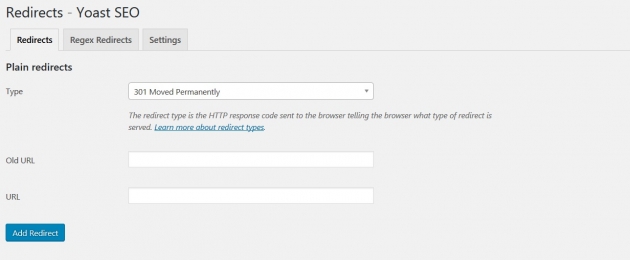
click for bigger image
So, whenever you change your URL, delete an old post or a page – instead of getting a 404 error page, the plugin will notify you to turn it into an appropriate redirect.

Wrapping up
Now you know. Whether you have an inactive post or page, or you're moving your site to a new domain, these are the ways to redirect your WordPress content and not worry if it affects SEO. And, once again, let us emphasize to always back up your site before doing any changes with it.
Feel free to share this post with your friends as well as let us know which way worked best for you in the comments below.
Tags: SEO tips, WordPress plugins, WordPress tips
How To Make Blog Coments Login Redirect To Another Page
Source: https://mekshq.com/redirect-page-wordpress/
Posted by: alcocerpoold1985.blogspot.com

0 Response to "How To Make Blog Coments Login Redirect To Another Page"
Post a Comment